Creating A Portrait Of A Character For Games, Cartoons, And Movies
Creating a portrait of a video game’s or cartoon’s character is a separate area of design that forms a basis of the character’s idea and is frequently used in creating illustrations for cards in card battlers, illustrative icons, illustrations for dialogues, and more. The concept artist should have the skill of professional drawing and deep knowledge of anatomy and understand the main distinguishing features of a character according to the physiognomy and how to highlight them correctly. In making your character more expressive, catchy, and memorable, you should consider many things: the influence of age, the use of “accessories,” facial expressions, the history of a character, styling, and more. You should know how to uncover some similarities and character traits as clearly as possible by using, for example, the exaggeration of proportions.
We at Room 8 Studio are fierce believers that drawing a character portrait takes practice, but it’s worth it. This article will reveal the must-knows necessary for adequately creating a video game character concept of any complexity. Please get to know what it takes to draw an imposing character from one of our expert concept artists Olga Starodubtseva.
Character Portrait Begins With A Mentor
The author of this article is a professional who knows precisely what she creates! Olga Starodubtseva – a lead Character Concept Artist at Room 8 Studio, has been working in the gaming industry for the past seven years and has cooperated with such globally acknowledged companies as Gameloft and Plarium. Olga is the founder of Karamba Art School, which runs online courses on concept art and digital painting. This is her professional hobby. Olga has successfully mentored more than 200 students and helped them find employment in the leading game development companies! And she constantly seeks extraordinary talents to join her team in Room 8 Studio. Moreover, as a CG industry thought leader and top-notch professional, Olga shares her accumulated expertise in computer graphics with a live audience at games industry conferences like Games Gathering, DevGAMM Talks, and CG Event.
From Theory To Practice
Whether you’re working from a cast, a live model, or just imagination, it’s essential to use one of the primary skills. It is not a skill of competent drawing or knowledge of anatomy for a concept artist, but the ability to affect the viewer’s mind. A professional draws what he sees and knows – all in one.
Yes, knowledge and practice are the main distinguishing features of a professional artist. Studying the artworks of famous artists in different styles and epochs can become an excellent habit to evolve your skills. As long as you keep drawing, you’ll move forward. All professional concept artists do it, so they have such amazing results.
To illustrate what we mean, let’s look at two images below: (A – professional) and (B – amateur). Both of them have two eyes, two ears, a nose, and a mouth. So what’s the difference? It’s difficult to say in one word. It seems to be obvious, but how to explain it?
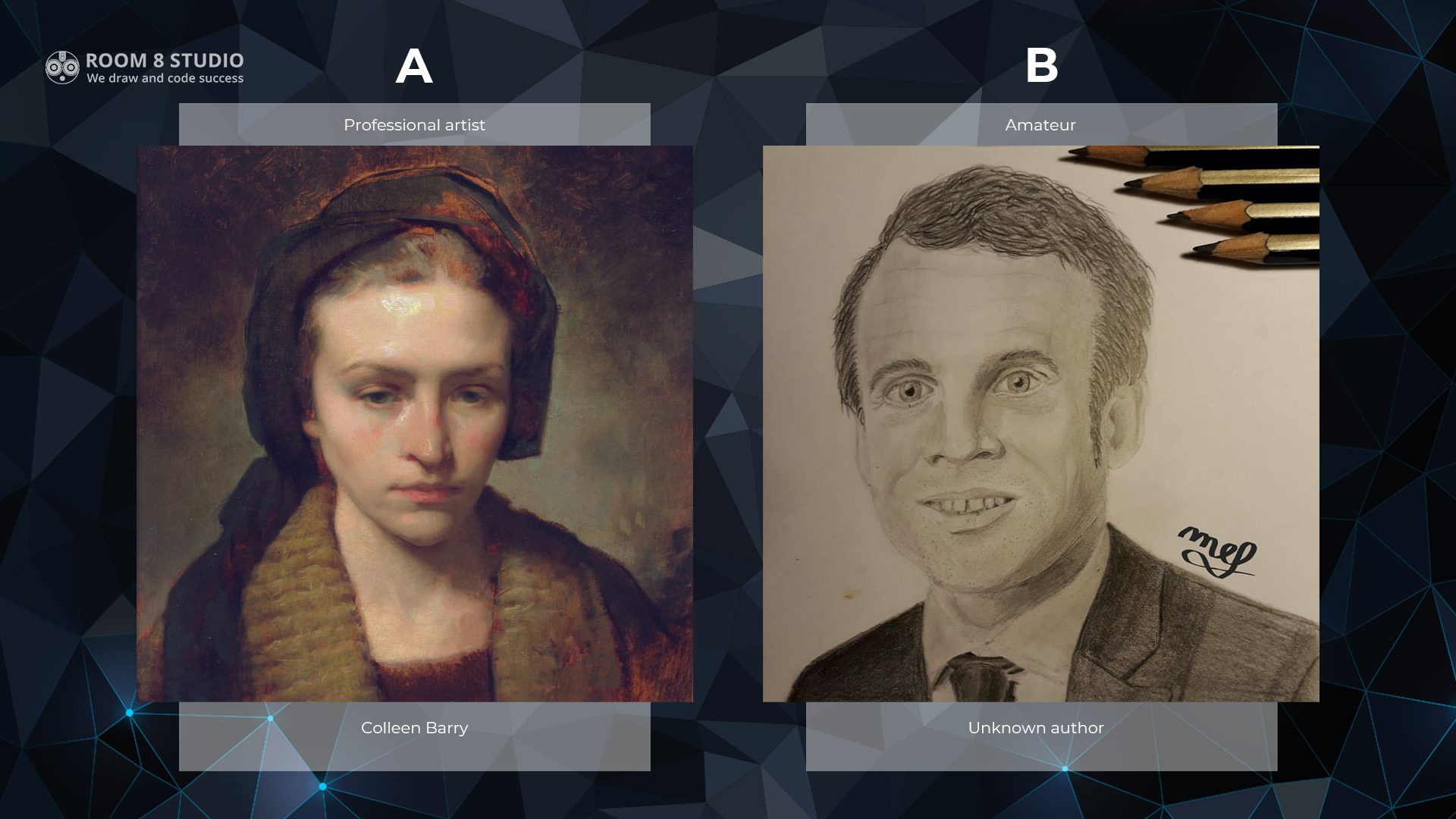
If we analyze the art pieces of professional artists, we see that they all adhere to the rules and canons of harmony, anatomy, and color science, and that is why they have such a great results, as in example (A). First of all, it is essential to understand that a portrait is not just a skin with a bulge in the shape of a nose, lips, eyes, or ears. The head has a bone base, which dramatically affects the appearance.
Skull, Its Structure, And Muscles
Craniometry. (from the Greek kranion, skull, and metrio, measure). It is the study of the shape and form of the skull. There is a technique of facial reconstruction according to the bones of the skull, its relief, and structure, also named an anthropological reconstruction of the appearance. Craniometry consists of taking precise ‘landmarks’ on the skull, its “constructive points,” facial angle, gender, and head shape types.
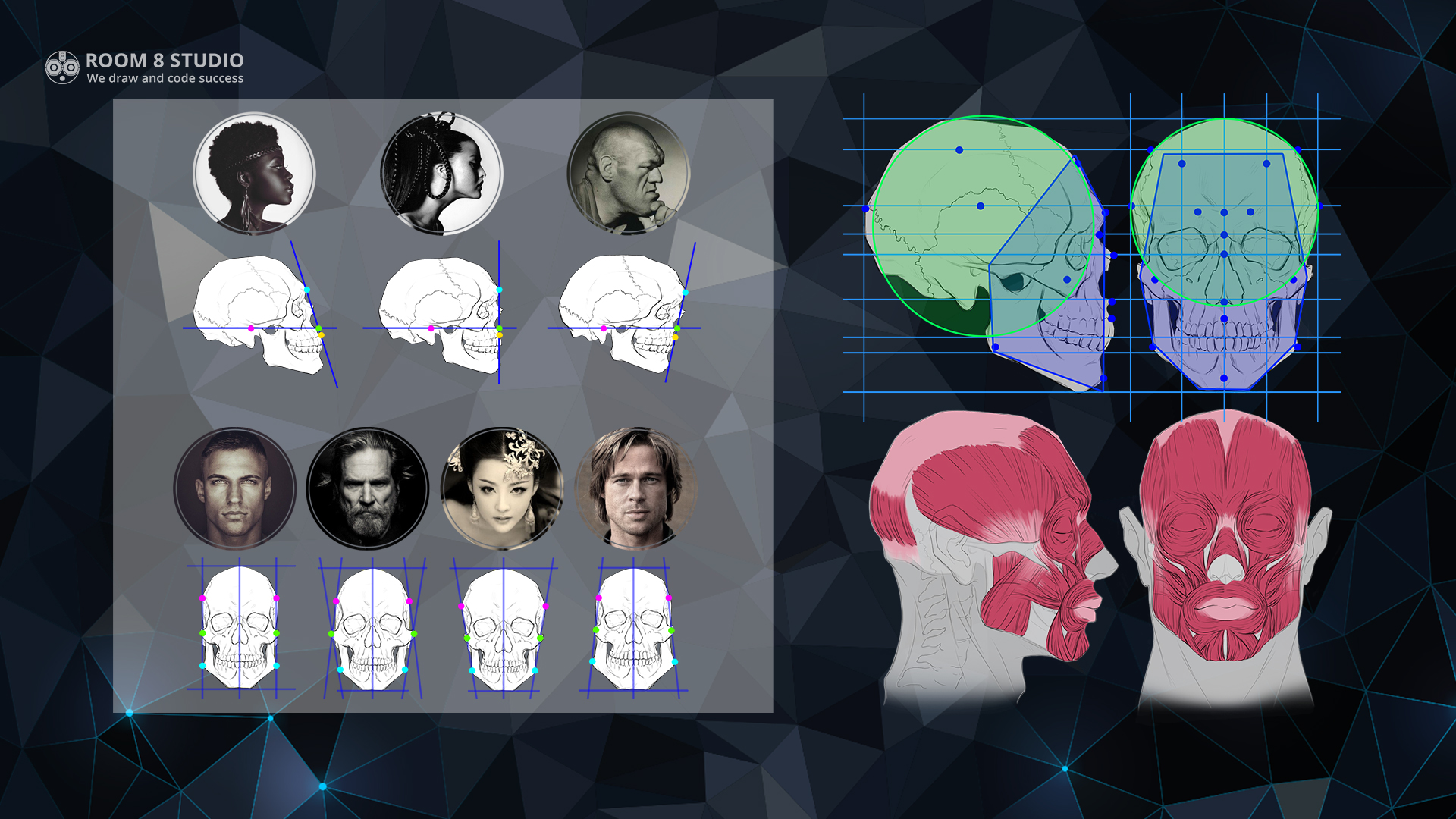
Head muscles. Other formations in the facial area have little connection with the bone base. Still, they substantially affect the appearance: muscles, permanent skin folds (ears, eyelids, lips), subcutaneous fatty tissue, and cartilage. The head muscles are divided into two groups: facial and chewing. Almost all of them are arranged in pairs symmetrically.
Strive To Harmony In Everything!
There are two indestructible constants in nature – chaos and order. And there is a harmony somewhere between them. You may hear a lot about the golden ratio – a proportion or harmonious division pleasing to the human eye. The ‘rule of thirds’ technique, as a simplified version of the golden ratio, was used everywhere by Renaissance artists in their paintings. And you should not be skeptical about the usage of this technique nowadays because you can see the “rule of thirds” in action today in almost any frame of any movie.
Another description of the law of harmony in nature is the Fibonacci numbers – the elements of a sequence (“Liber Abaci” (1202)) in which each successive number is equal to the sum of the two previous ones.
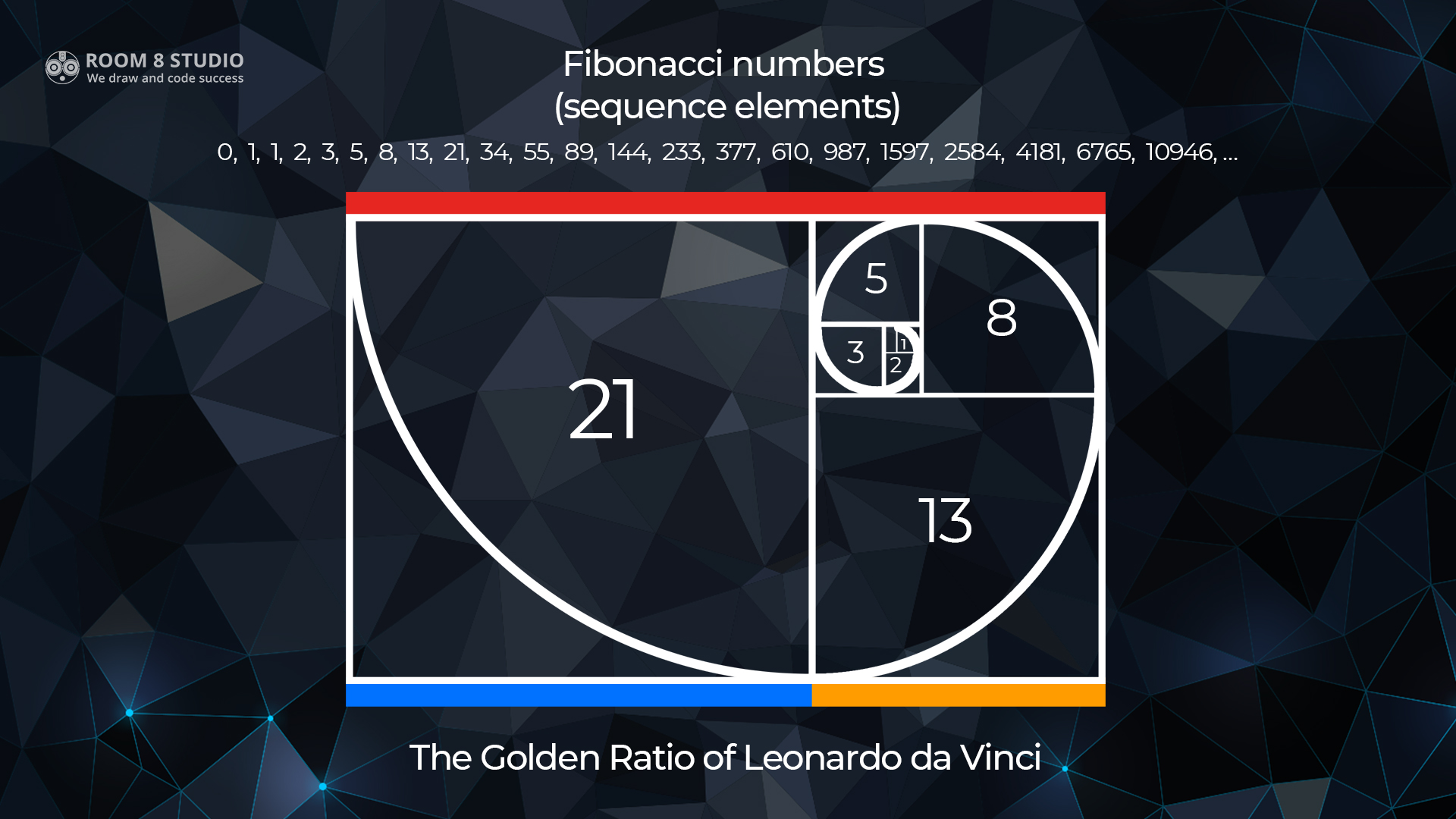
You can find the “golden ratio” also in a variety of living systems, for example, spiral structures, phyllotaxis (leaf sequence), parameters of biorhythms, or body proportions. The exact proportions are also present in the ratio of color, tone, and anatomy! Since we all are a part of the universe, all these proportions are directly applicable to us. Human is a proportional creature. And therefore, it’s essential to consider this when you create video game character portraits.
Сharacteristic Features In A Portrait
There are so-called ideal proportions of the face, also named the “golden mask.” The closer the proportions of a human face to this standard, the more attractive it seems.
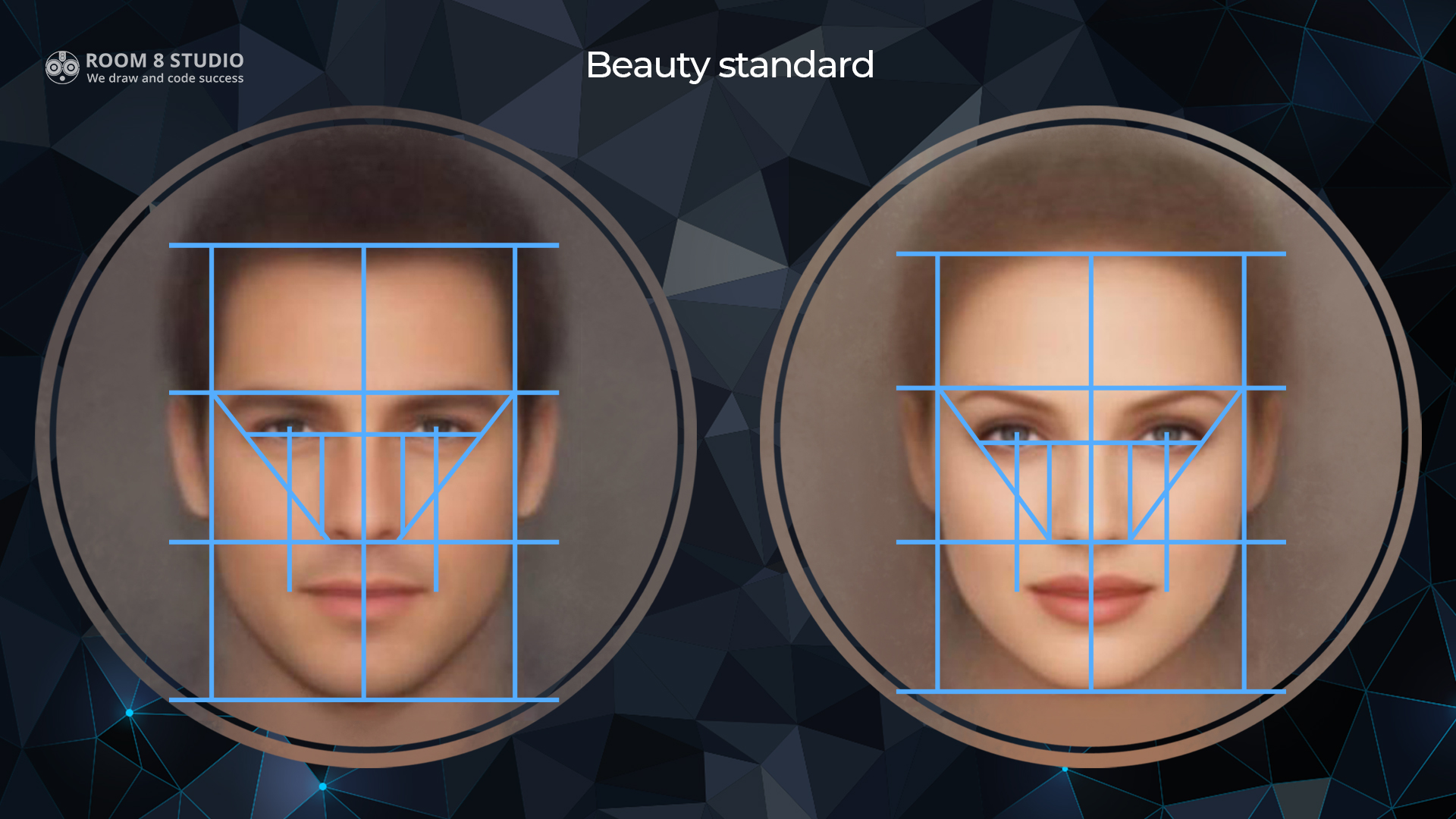
Many photos of beautiful men and women were combined during the experiment, and an average ‘beauty standard’ was found. Undoubtedly, the resulting image was attractive but not remarkable and featureless. It would seem that people do not like extremeness in facial features, for example, а long or wide nose, apparent asymmetry, a small forehead, and the like. Still, these deviations from the norm, the non-standard features, are the most memorable in the appearance!
Speaking about a portrait, the first and most essential question is HOW TO MAKE YOUR PORTRAIT LOOK ALIKE THE PORTRAYED PERSON? When you draw a portrait, you need to understand and consider what distinguishes your model from others. The main elements that help you create a unique portrait and convey the similarity or emphasize the characteristic features are the forehead, eyebrows, eyes, nose, cheekbones, lips, chin, angle of the lower jaw, and ears. You can change a couple of characteristic features, and the whole expression of the face will immediately change.
The principles of human face structure are the same for all. The only difference is in the distinction of the shapes and development of certain elements; for example, the nose can be long or very small, and lips can be plump or very thin, and so on. This gives the understanding to the professional artist on how to transfer the similarity into the portrait.
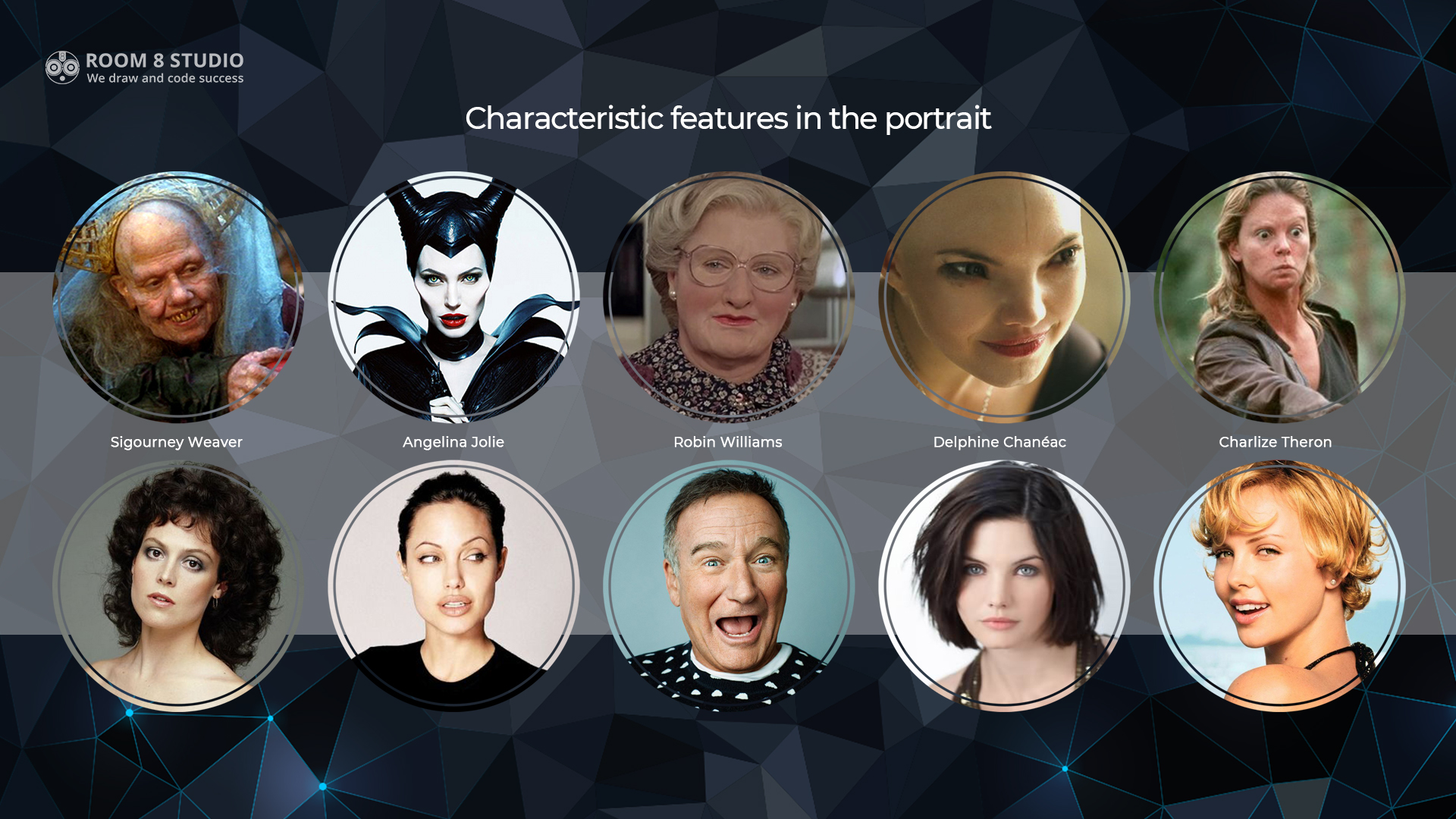
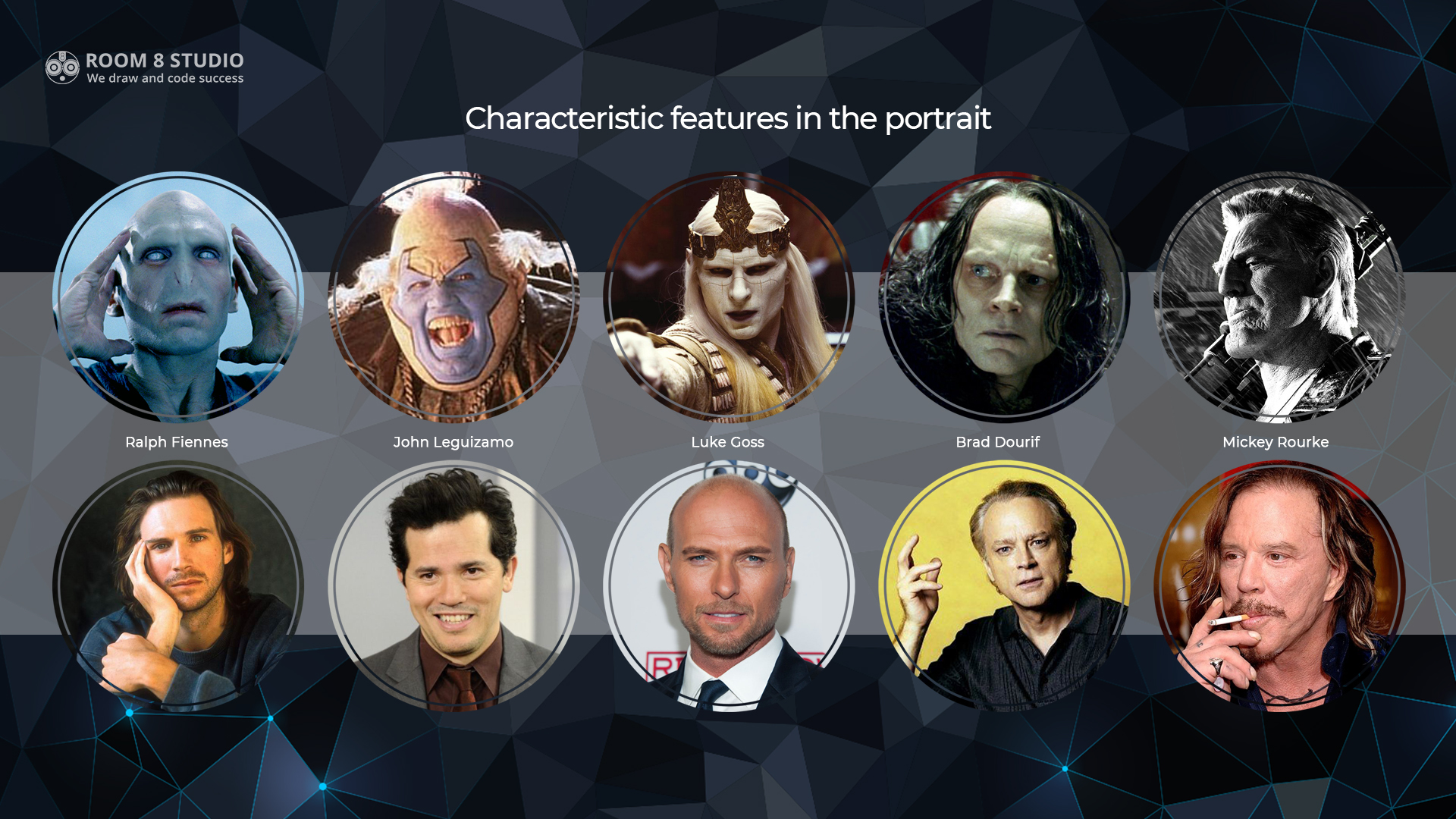
Make-up artists often use this technique. With makeup, wigs, whiskers, noses, and more, these professionals can completely change the appearance of an actor and create the desired image and tell the character’s story or their background details.
The lifestyle and occupation of a person also significantly affect appearance.
Age Features
During the aging human face changes a lot, but most characteristic features remain unchanged, and some of them even begin to appear more clearly. Mimic folds and wrinkles become pronounced and reflect the emotional side of a person. A gloomy person has wrinkles fixed on the forehead. A sad person has the corners of the mouth and eyes lowered. The characteristic features of a merry fellow are the pronounced nasolabial folds because of frequent laughter, and their muscles are always in tone and pull everything upwards.

A Few Interesting Facts About Human Face:
- nose and ears are growing during the whole life.
- teeth also undergo radical changes. In their complete absence, alveolar part of the mandible almost atrophies and the lips drop inside.
- children have almost no wrinkles due to the presence of collagen and the absence of life stories imprinted on their faces.
- very small children and newborns have clearly visible fatty deposits in the cheeks, which eventually disappear.
- a child’s nose is mostly bent upwards and called snub-nose. And only with age, when the nasal cartilage ossifies, the nose can become, for example, bumpy or hawk.
Same Same, But Different: ‘Accessories’
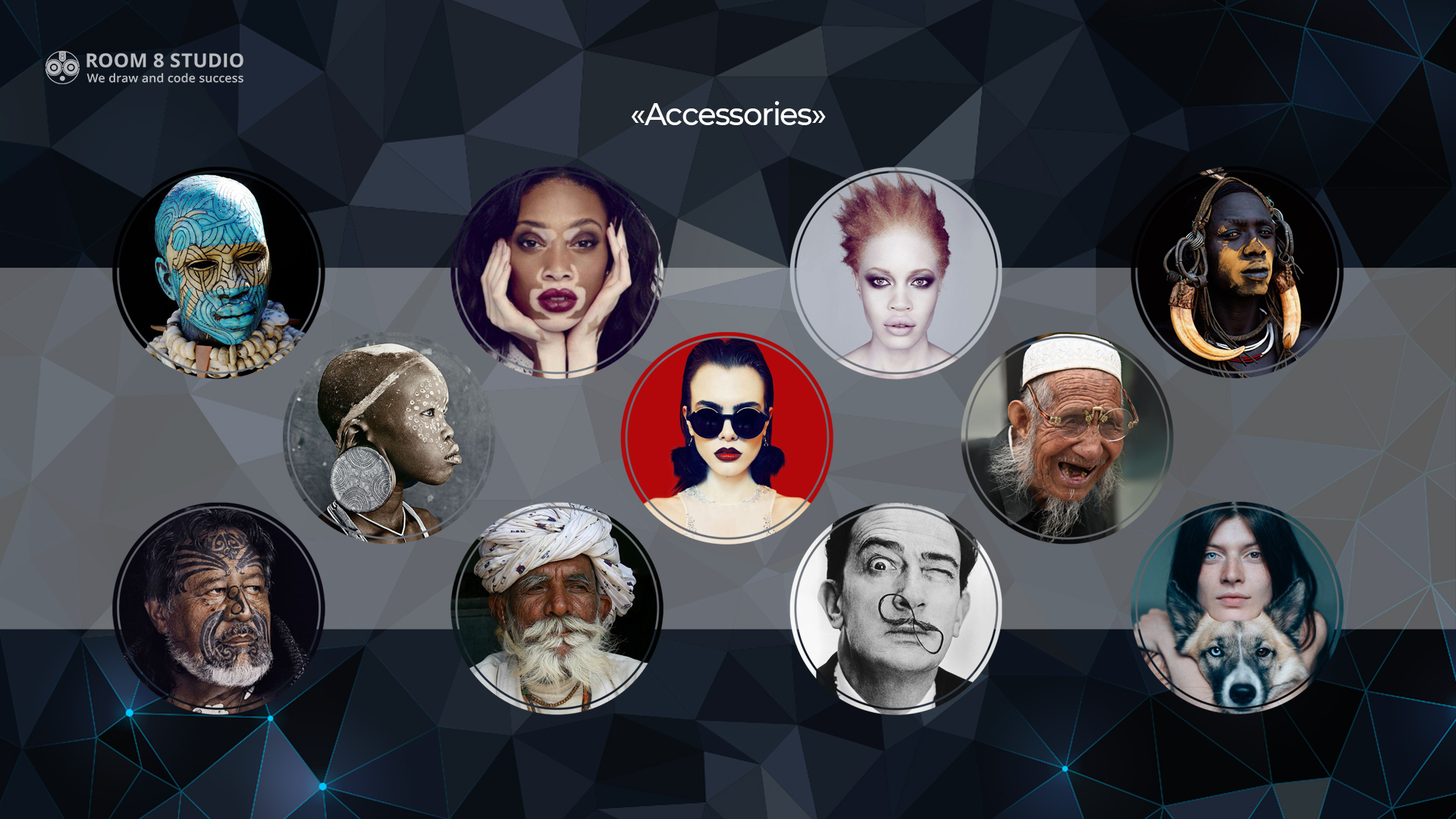
So, how to make a character portrait more catchy? We are talking about individual details of appearance: the position and size of the elements of the face (eyes, nose, lips, cheekbones, etc.), birthmarks, pigmentation, the color of eyes, hair and skin, scars, etc.; as well as about some accessories complementing the appearance of the character: earrings, glasses, national decorative elements and jewelry, tattoos and more. When you create a character portrait, such decorative elements can emphasize and enrich the image and become a bright detail in focus.
A face can significantly change after applying different “accessories.”

Facial Expressions And Emotions
When it comes to facial expressions in creating a character portrait, a mirror can help you. You might not know, but each Disney animator at Animation Studio had a mirror on their desktop because they drew all the facial expressions of cartoon characters themselves.
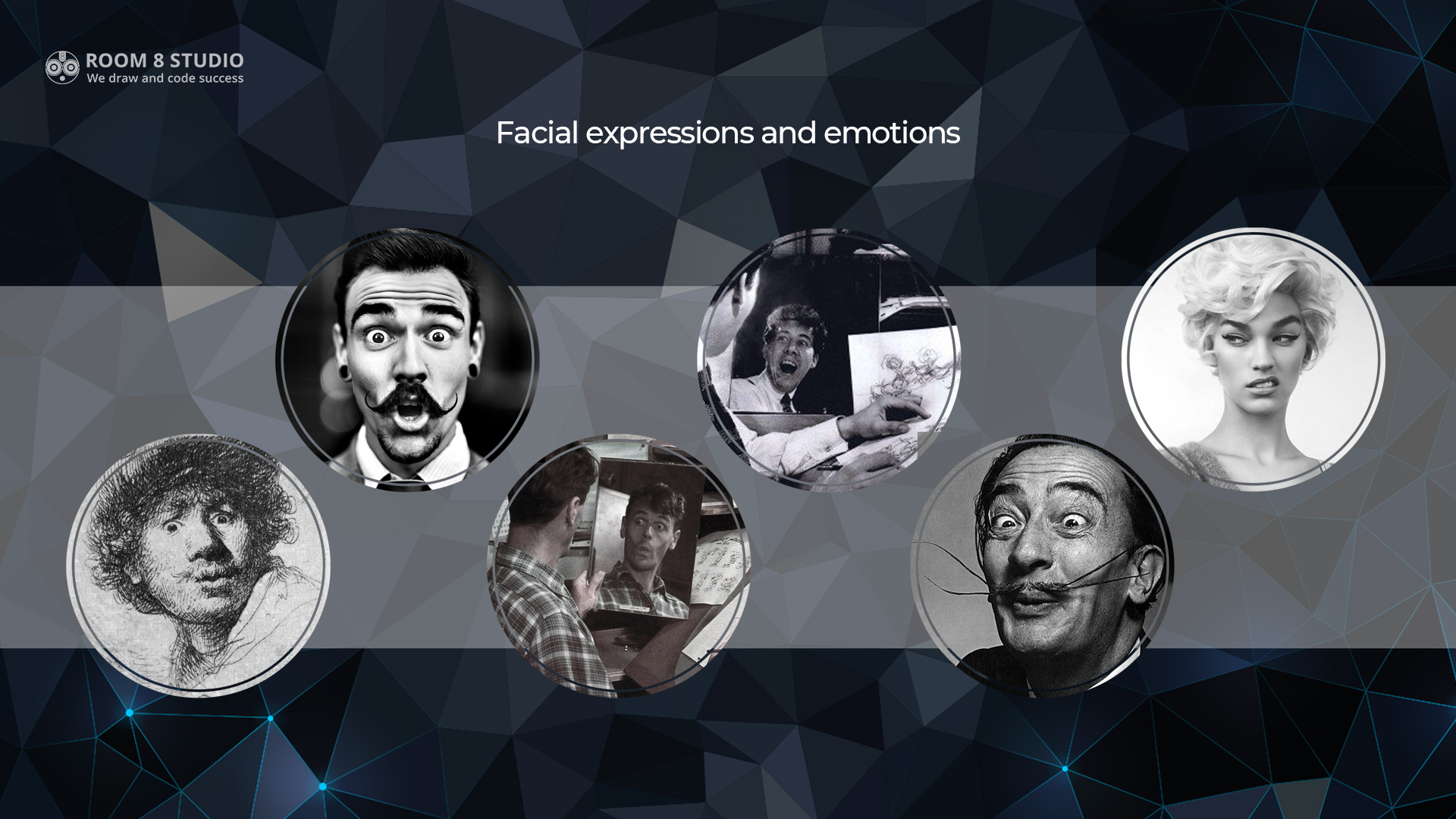
The Stylization Of A Video Game Or Cartoon Character
While creating a character portrait or illustration, artists often exaggerate the shape of a face or its elements to make the image catchy and memorable and match the game’s style. For example, it can be a hyperbolic enlargement, reduction, or deformation. Exaggerating proportions also help create your portrait of a character more compelling, conveying the aspects of the character’s nature and the distinctive features of his image as vividly as possible.
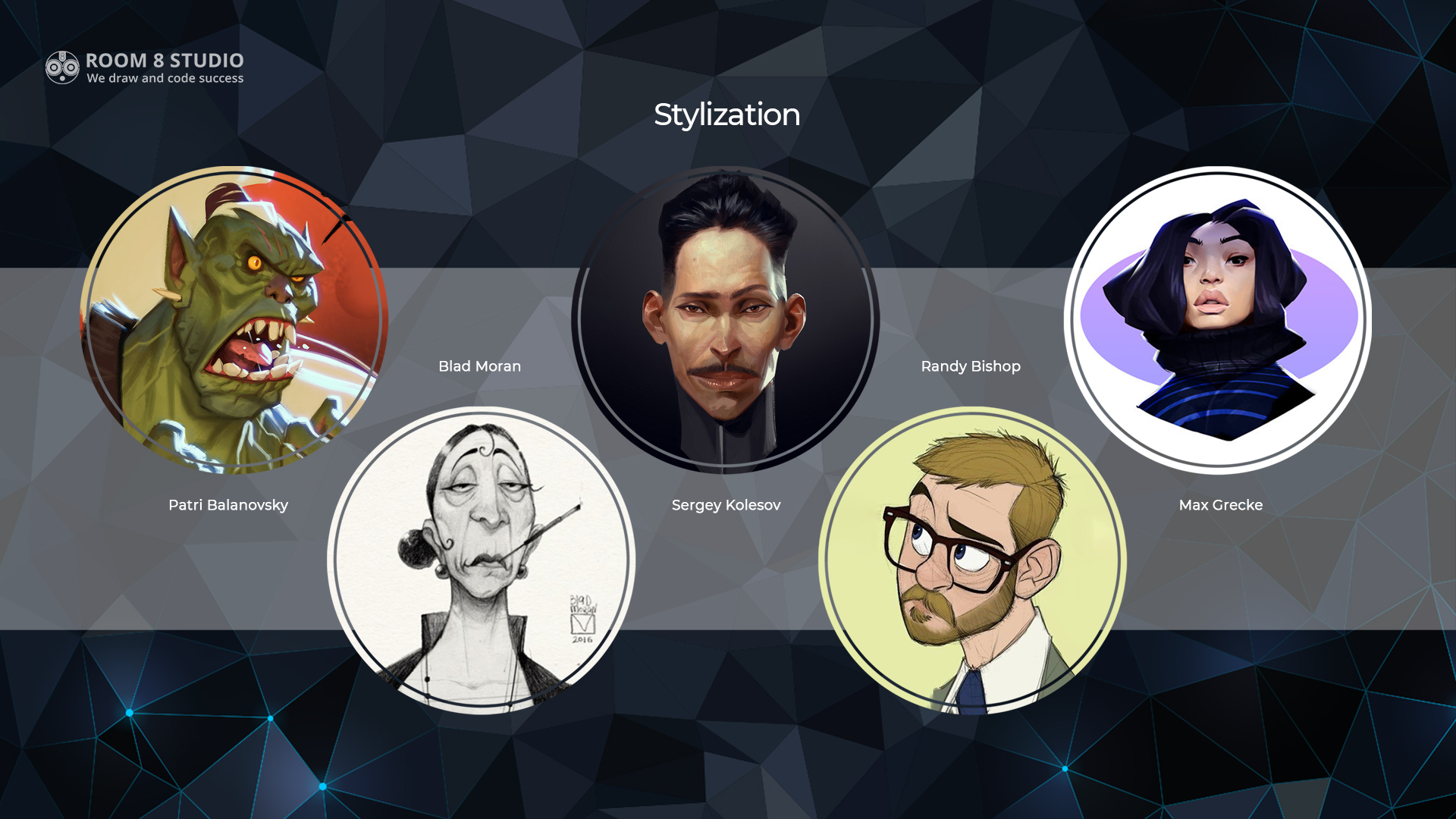
Each of the above points gives some insights and keys to creating a truly excellent character for a video game with remarkable features and characteristics. For example, knowledge of anatomy lies at the core and helps set the correct proportions for your character at the sketch stage. And after that, step by step, your understanding of harmony, characteristic features, facial expressions, and emotions, and the influence of ‘accessories’ helps make your character design catchy and remarkable.
Summing up all the tips on drawing a character portrait, it’s worth saying that the choice is always yours! Whatever you choose – to study anatomy or not, apply the laws of harmony and color study or rely only on your imagination, constantly practice and polish your skills or settle for what you already know — that’s always up to you. The only question is whether you paint like a professional artist or an amateur.
Does your game need great characters? Tell us the details of their life story, behavior patterns, and traits (nature), and Room 8 Studio professional artists come up with really expressive game character сoncepts! Contact us to see how we can leverage our experience to create the game of your dreams.



